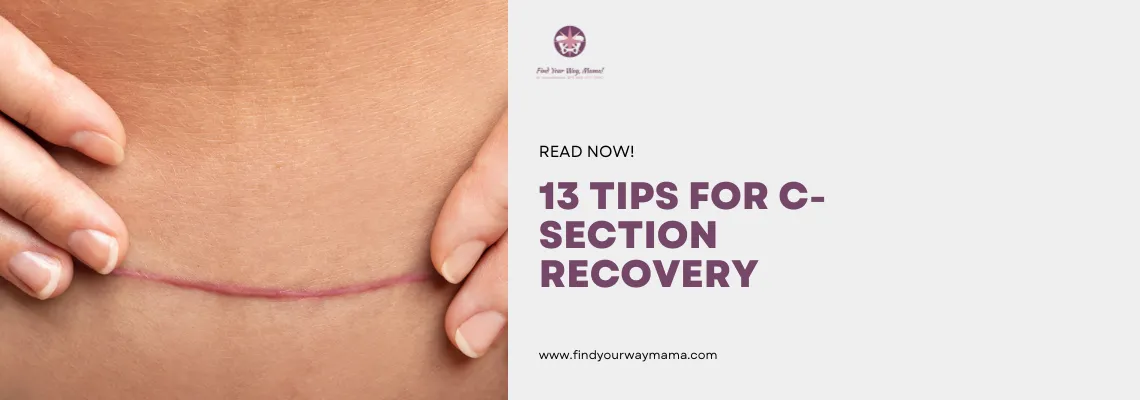
13 Tips for C-Section Recovery
While C-sections are very common the after care remains lacking. You likely are here with a ton of questions. How long will it take? How can I best support myself? What tips can make a C-section recovery a bit easier?
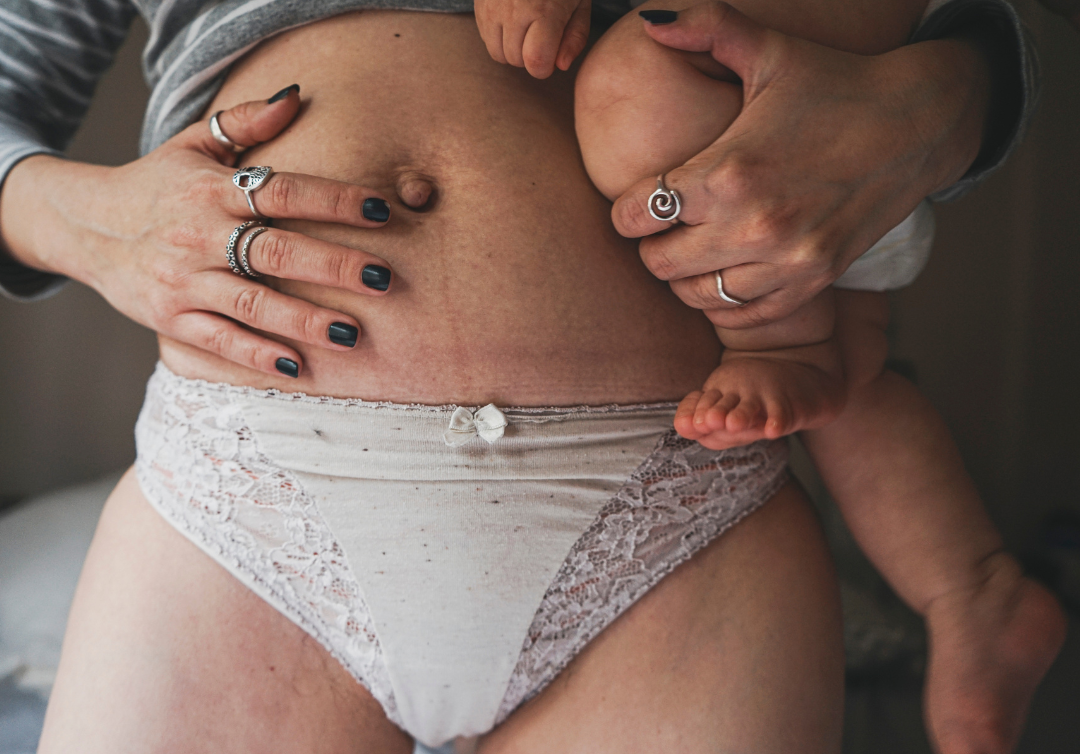
A C-section or a cesarean birth is a major abdominal surgery and as any major surgery requires care and attention to recover optimally. On top of the typical hurdles for recovery from any major surgery, mothers who undergo a c-section have some extra obstacles (aka new born babies to take care of!) That is no small feat and should not be taken lightly.
Cesarean section is one of the most common major surgeries in the united states and the rates continue to rise. The CDC reports that 32.2% of deliveries were c-sections, that’s up from 30% a few years prior. Just because it is very common does not mean it is “normal” and that our bodies will just know what to do.
The prevalence of c-sections continues to trend upwards and ensures that C-sections are still of the most common major surgeries in the US. Unfortunately they are also the only major surgery where you are not met with a rehabilitation professional before you leave the hospital. This has got to change! Especially if we want to make actual progress for better maternal health care, but that’s a story and a soap box I’ll climb on another day.
In the meantime here are some helpful tips to make your cesarean section a smoother recovery.
Know your precautions
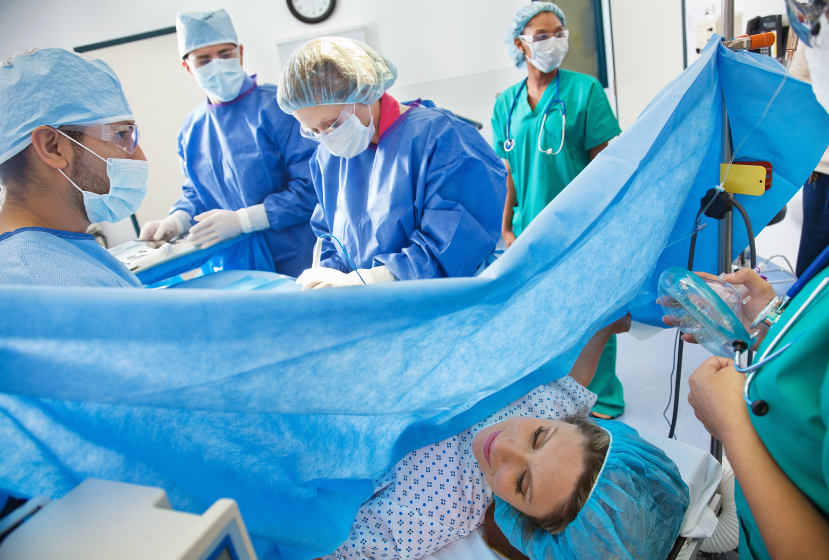
After any major surgery there are often a set of precautions – things you should avoid doing – to decrease risk of complications and infections. Cesarean births are no different so make sure you know and adhere to your precautions.
No bathing – you do not want to soak or submerge your incision in baths, pools, hot tubs or any other body of water. This will help you decrease risk of infection. No bathing until incision is completely healed and you no longer have vaginal bleeding – usually around 6 weeks.
No lifting anything heavier than your baby. For most abdominal surgeries the limit is 10lbs however to be more practical babies weight is the limit here.
No strenuous activity for 6 weeks, let’s make sure to include here tasks like vacuuming which tends to have increased pushing and pulling and increased time on your feet.
Avoid twisting. Twisting is when your shoulders and hips are not stacked up. This motion causes increased tension over the incision. This is a standard for abdominal surgeries but is often not mentioned to new moms.
Avoid too tight clothing or under garments that can put too much pressure or cause friction over the incision area making it a higher risk for failure.
Avoid sexual intercourse, tampons or anything else inserted into your vagina.
Limit use of stairs. Avoid increased use of stairs – this may take some pre planning of your day if you live in a multi-level home.
Get Out of Bed from Day 1
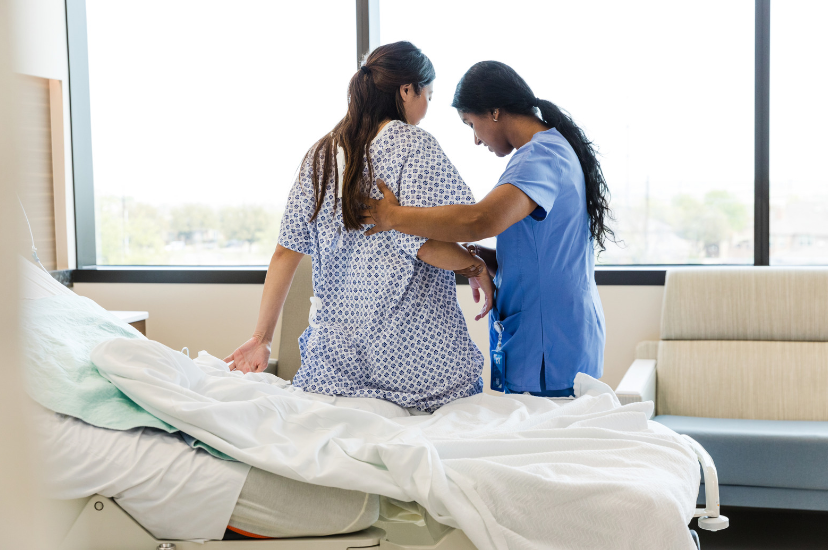
While there is a good chance you are going to feel exhausted after your c-section, it is important to get out of bed early and often. Ideally your first time out of bed should be assisted, whether by a nurse, another member of your rehab team or at the very least family or friend. This is to ensure you do not feel light headed or dizzy, unsteady or very painful. If any of the above occur stay seated at the edge of your bed and use your call bell for assistance.
Benefits of getting out of bed to aid your c-section recovery
Getting out of bed improved blood flow and oxygenation. This allows for improved and quicker healing. Staying in bed increases risks of blood clots, pneumonia, constipation and general fatigue while also increasing weakness and general fatigue. On the flip side when you get out of bed early and often you decrease your risks of those potential complications.
You should try to get out of bed twice (but at the very least once) within the first 24 hours after surgery. Then gradually increase your frequency and tolerance from there. Again if you are feeling uncertain, ask for assistance from the hospital staff.
How to get out of bed after a c-section
Ok so now we know why it is so important to get out of bed after a c-section but HOW do you do it without risk to your incision or increasing pain? You want to avoid sitting up even with the assist of someone pulling you up as this flat to sitting movement puts a ton of pressure out onto your incision. Instead bend a knee up, roll to one side, use the strength of your arms to push yourself up to sit as you let your legs off the edge of the bed. I have a post on IG that goes through what log rolling looks like so you can get a better idea here.
Try to avoid raising the head of the bed up to get out of bed – this will likely make the transition to home harder. If you absolutely must to get out of bed day one, go ahead and use the hospital bed features to make it a little easier but work towards a flat bed on subsequent days.
Work towards lying flat after a c-section
Ok so we just talked about working towards getting out of bed from a flat bed but you might be thinking this doesn’t apply to me I have an adjustable bed at home. There are benefits to lying flat other than necessity. Lying flat puts the least amount of pressure onto the incision. It also can act as a very gentle stretch to the area which can help with scar tissue development and also help you stand upright without decreased discomfort.
On a safety note if you have an adjustable bed and are planning on co-sleeping you want to make sure the bed is fully flat so you will need to tolerate this position. If you think there is any chance, even an accidental chance that you might co-sleep with baby check out the safe sleep seven.
Because lying flat is a gentle stretch to the incision area it might be uncomfortable at first. If that is the case start with gradually decreasing the angle of the bed. Once you get it flat start with short 5 minute bouts. If you have sleep apnea you will likely be encouraged to keep the angle of the bed at 45 degrees when sleeping but you can still do 5 mins of flat lying during the day to get the gentle stretch benefits.
Pain Management is Important for c-section recovery
As we discussed Cesarean sections are a major surgery. Your abdominal area is fully opened up by cutting through several layers of tissue. Then clamps are used to keep the space open so your surgeon has room to work and deliver your baby safely. We can not expect to be pain free, even with the best protocols in place, after a c-section. It is also not acceptable to be in high levels of pain afterwards. Thus pain management becomes a balancing act that needs to involve many tools to do the trick.
Those tools include: medication, positioning, bracing, gentle slow mobility, ice and heat.
Medication
During your c-section pain is controlled with epidurals, blocks and at times anesthesia. After your surgery you will likely be on a combination of opiods and non-opiod drugs such as tylenol and motrin. The exact combination will depend on several factors including your pain tolerance, your personal risk factors for developing dependancy and ability and affectiveness of additional modalities. A recent study out of Parkland Health in Dallas is showing improved long term pain management and increased breastfeeding rates with a shift towards non-opioid protocals.
A key to success of non-opioid medications is dependent on timing (so don’t skip your doses early on) and also incorporating some of the below techniques.
Positioning
After a major surgery it can be difficult to get comfortable. Generally side lying is the best tolerated position after a c-section. Using a body pillow or pillow between your knees can increase the comfort. Laying on your left side can promote circulation and digestion which might make it a slightly better position to be in.
Both side laying and supine (flat on your back) put the least amount of stress on the incision area. As stated before it might initially take some getting used to to be flat as it can place a slight stretch across the abdomen. If you are noticing that try placing a pillow under your knees or a slight increased angle at the head of the bed with either a wedge or adjusting the head of the bed itself. Ultimately you do what to get to a fully flat position.
The important thing is to change positions often. While yes ,finding a position you can rest in is important you want to be mindful you are not spending all day in the same spot. Try repositioning at least every 2 hours during the day. This will help with circulation, allow gentle stretch and movement across the abdomen and decrease risk of strains, muscle soreness or areas of pressure to develop.
Positioning doesn’t only refer to the positions that you are resting in. When feeding baby (breast or bottle) make sure your back is supported and arms are supported as well with either pillows or a Boppy. Often new mothers after a c-section find the football hold to be most comfortable but make sure to work with lactation in the hospital to find the best position for you and baby.
Positions to avoid
How you do day to day tasks and what you need to avoid can make a difference. I mentioned before to avoid twisting as one of your precautions, that is for incision integrity but also pain management as this can be particularly uncomfortable early on.
Learn to brace your incision
Bracing your incision means applying gentle external pressure over your incision. You can brace with a pillow or simply your hands. You apply a gentle pressure in towards your abdomen when internal pressure is moving outward. This gives the incision some stability and prevents it from ballooning outwards when internal pressure is too high.
Times when you want to brace your incision include coughing, laughing, sneezing and having a bowel movement. You may also want to brace your incision with position changes such as getting out of bed (while log rolling!) and also going from seated to standing.
This can help significantly with discomfort
Gentle and slow mobility
While rest is important after a surgery so is gentle movement and mobility. Yes strenuous activity should be avoid but becoming too sedentary could lead to increased pain and decreased recovery times. This goes hand in hand with getting out of bed early and often. Mobility and movement are shown to improve oxygen flow and increase healing.
A study out of China showed that new moms who were encouraged to participate earlier in out of bed activities had significantly decreased pain and shorter hospital stays than moms who stayed in bed longer.
Gentle mobility can include short bouts of supported walking, gentle shoulder and upper back mobility as well as seated heel raises and leg extensions (not marching.) A very gentle mobility exercise for the abdomen is breathing into the incision area with a hand above and below the incision (by at least 3 inches.) This allows for gentle mobility at the surgical site to decrease pain and help with healing. Deep breathing it self has been shown to help with pain management by activating the parasympathetic nervous system. Grabbing your Postpartum Plan is a great way to get started with gentle movement.
Use ice or heat
Ice packs are great for decreasing pain and inflammation postoperatively. You can place ice packs on a towel over your incision for 20 minutes at a time with at least 40 minutes off between applications. Ice is helpful the first week after surgery. If the thought of ice makes you cringe you can also reduce pain with a heating pad set to low or warm compress over the lower abdomen and incision area. Do not leave it on for longer than 20 minutes at a time. Alternating between warmth and cold can be very beneficial as well.
Binders – how to don when to stop wearing
A binder is a soft elastic wrap. It should be pretty flexible. They can provide a bit of support and feedback to the abdominal muscles and can help decrease pain and improve mobility early on.
When putting on your binder you want it to start at your hips – not your waist. Most our velcro. When fastening it start at the bottom and work your way up. It should end before or just at your rib cage – you do not want to restrict breathing. The binder should be put on pretty loosely – it should not feel tight or restrictive.
Note a binder is not a waist trainer. We are not trying to snatch in our waists or get rid of all evidence of pregnancy here. Pulling a binder too tightly or starting top down can put too much pressure on your pelvic floor.
You do not want to wear it all day have it off at least a few hours a day and gradually decrease wear time. Wearing it all day can lead to skin irritation or a rash. Generally I suggest you wear it for a week or two and slowly decrease the time it is on. As you move further along you might want to wear it for longer walks or a full day of doctors appointments but otherwise have it off.
Pay attention to bowel hygiene when recovering from a c-section
Bowel movements are not regular right away after a surgery. It might take a few days. This is normal after surgery however you want to make sure you avoid constipation and straining. Constipation and straining can put too much pressure on your incision as well as your pelvic floor.
To avoid constipation take stool softeners – especially if you are taking any opioid pain medication. You will likely want to take stool softeners your first few weeks – but discuss this with your physician. It is important to maintain hydration, especially if you are planning to breastfeed which requires increased hydration. Positioning matters using a squatty potty or a step stool to get your knees higher than your hips will make it easier to have a complete bowel movement. As previously mentioned you will want to brace your incision area as you are going to the bathroom. Movement of your body also helps improve the motility of your bowels – another pro to gentle movement and walking.
For more info on avoiding constipation postpartum read here.
Incision care after a c-section
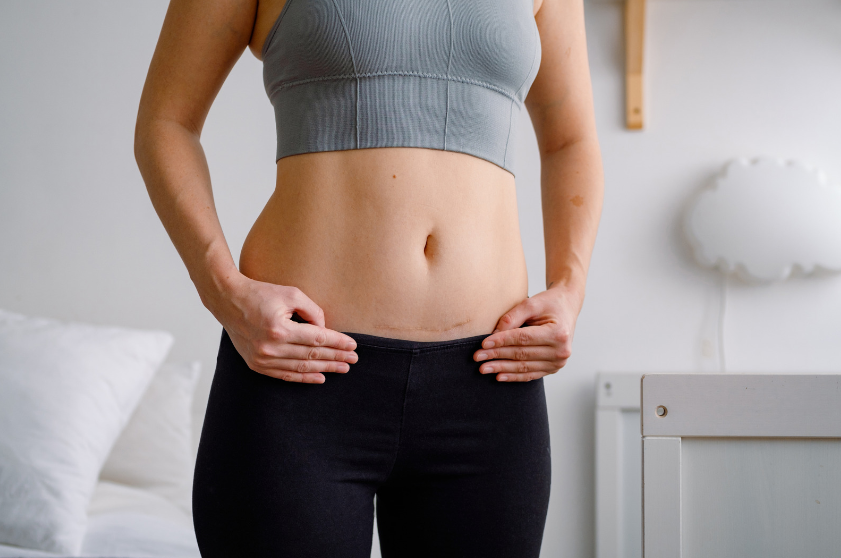
You will likely be able to shower the day after your surgery but the hospital staff will give you the all clear here. Before getting in the shower make sure you are able to stand and walk about the room without feeling dizzy or light headed.
You can get the incision wet in the shower, soapy water can run over the incision but you do not want to scrub the area. Gently pat dry the area again no rubbing.
If you have a dressing or cover over the incision replace it if it is wet or dirty. Replace it at least once a day.
While you can shower you can not take a bath or soak the incision. Do not use hydrogen peroxide or any ointments or lotion over the incision until it is fully closed – usually around 6 weeks but your doctor or midwife will let you know.
Wear loose and comfortable clothing, cotton underwear or even better stick with the mess ones they give you at the hospital. In fact stock up on these before you leave. They might not be VS worthy but they are amazing after a c-section.
Signs of an infection and other reasons to alert your doctor
Fever greater than 100 degrees F
Sudden shortness of breath
Red, swollen, shiny, painful lower leg
Sever headache shortly after birth
Increased redness, tenderness and warmth at incision site
Discharge and or oder from incision
Incision that is not closing or reopens
Vaginal discharge with a foul oder
Unable to urinate, burning or pain with urination, blood in urine
Increased vaginal bleeding soaking through a pad an hour or very large clots
See a physical therapist to improve c-section recovery
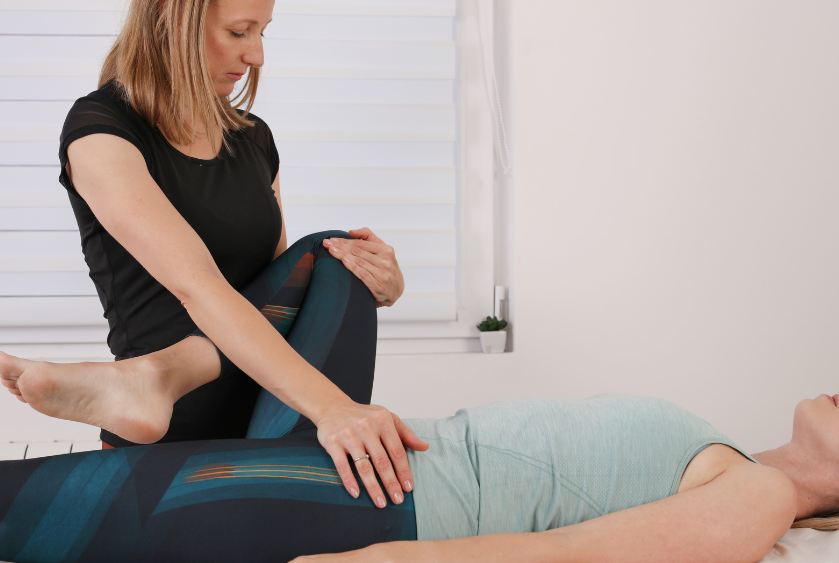
Seeing a physical therapist is required after most major surgeries before the hospital will discharge you home. This is to ensure safety and activity tolerance with basic tasks of getting around the house. While also promoting healing and improving recovery times while being able to monitor for side effects and complications. Unfortunately, this is not yet the standard after having a c-section.
Just because it isn’t the standard does not mean that it is not best practice and be greatly beneficial to you. Postpartum physical therapy has a lot of benefits, this is especially true after a c-section. Not only do you need to recover appropriately, perform basic activities of daily living you also have to care for a brand new little person! That’s a lot!
Don’t take my word for it – there’s research to back it up
A study in Archives of Gynecology and Obstetrics showed that early post-cesarean physical therapy (PT) intervention allowed for earlier return to walking and return of bowel movement compared to nursing care alone. While both the PT/nursing care and nursing care only groups had improved pain ratings within 2 days time the group that received PT required significantly less pain medication.
A study published in 2021 in The Journal of Women’s and Pelvic Health PT demonstrated that when physical therapy was added (1 x a week for 6 weeks) to a c-section recovery plan the moms had improved measurements in pain, disability index, patient satisfaction and self efficacy compared to the moms who were in the standard of care group. These changes were significant at 14 weeks and 6 months.
Even better still, if you are having an elective c-section book an appointment with a physical therapist before the scheduled birth. A recent 2022 study states that women who had training and education from a physical therapist prior to their c-section had better outcomes in regards to decreased hospital stays, improved pain scores post-op and with return to function and decreased pain medication required to get to those improved pain scores.
Now what? How to further improve your c-section recovery
Start by Grabbing Your Postpartum Plan.
Looking for a pelvic PT and postpartum wellness coach to improve your c-section recover? Make sure you reach out today. I currently am working in person with women North of Boston and virtually around the globe.
Thank you for sharing!
Struggling with postpartum pelvic pain, leaks, or discomfort? Download your FREE Postpartum Pelvic Recovery Guide and learn simple, expert-backed strategies to heal, strengthen, and feel like yourself again. Because your recovery matters—let’s take care down there!
